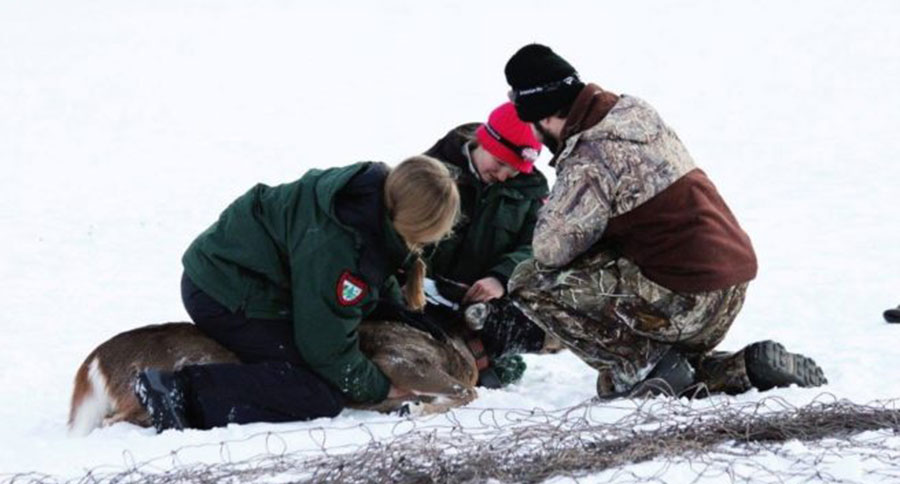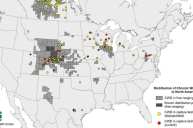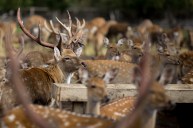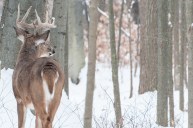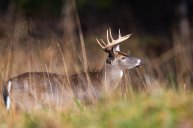GPS collaring deer is no easy task. However, this group of biologists, technicians, and interns have it down to a science.
A group is attaching and tracking GPS collars on Maine deer in order to study mortality in deer populations over the course of the year.
Specifically, biologists are looking at the winter time period and analyzing how deer congregate.
But first, the biologists, technicians, and interns from the state university must wrestle the deer in order to attach the collar.
Capturing deer is no easy task. There are several methods including drop nets, rocket nets, and tranquilizing darts. However, more times than not officials use what's called a clover trap. The trap is a metal frame with netting. The technicians and interns then swoop in and begin the process of tagging the deer.
It's a much, much different kind of deer hunting season.
The techs and interns from the Maine Department of Inland Fisheries and Wildlife wear protective gear in case the deer get feisty, but normally the process is quick and easy once the deer is calmed down with a blindfold.
As mentioned, the group is studying winter mortality in different animals inside various Wildlife Management Districts. Most of the animals are adult female deer and some fawns. Mature bucks get ear-tags and are released. The GPS tracking collars ping twice a day. If the deer doesn't move in a four-hour period the biologists try to locate the animal's whereabouts in the field and determine the cause of death.
With the deer herd under the threat of Chronic Wasting Disease the state is obtaining data through the radio collars to identify how the deer move within their normal home ranges, and how Maine should move forward with certain feeding programs. These programs congregate deer during the winter, increasing the odds of CWD spreading.
The state of Maine allocates "any-deer" permits, and these studies will help the department officials make up-to-date decisions on how many of those permits are allocated.
In other words, a hunter's plans may depend on what interesting findings this and other studies unearth. It's worth paying attention to.
Like what you see here? Read more hunting articles by Nathan Unger at whitetailguruhunting.com. Nathan is also the host of the Whitetail Guru Hunting Podcast.
NEXT: MISSISSIPPI STATE UNIVERSITY STUDY SHEDS LIGHT ON BUCK MOVEMENT
WATCH
